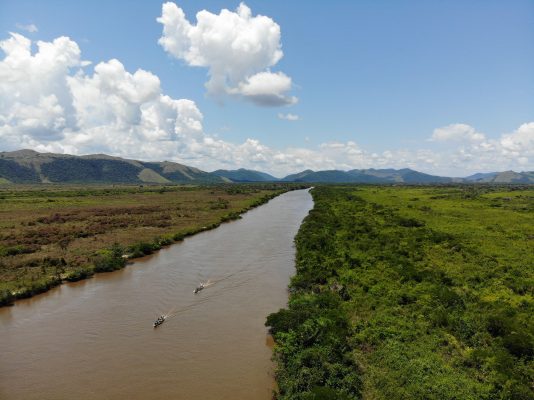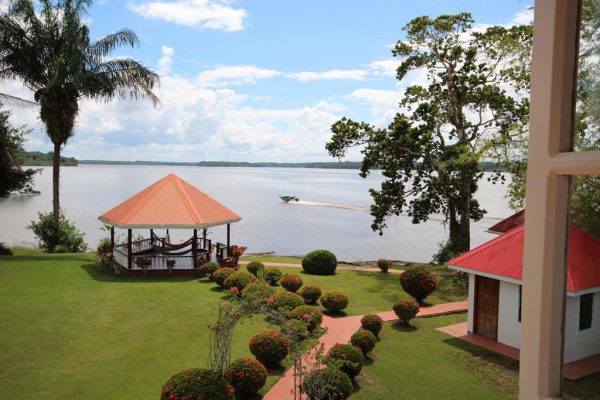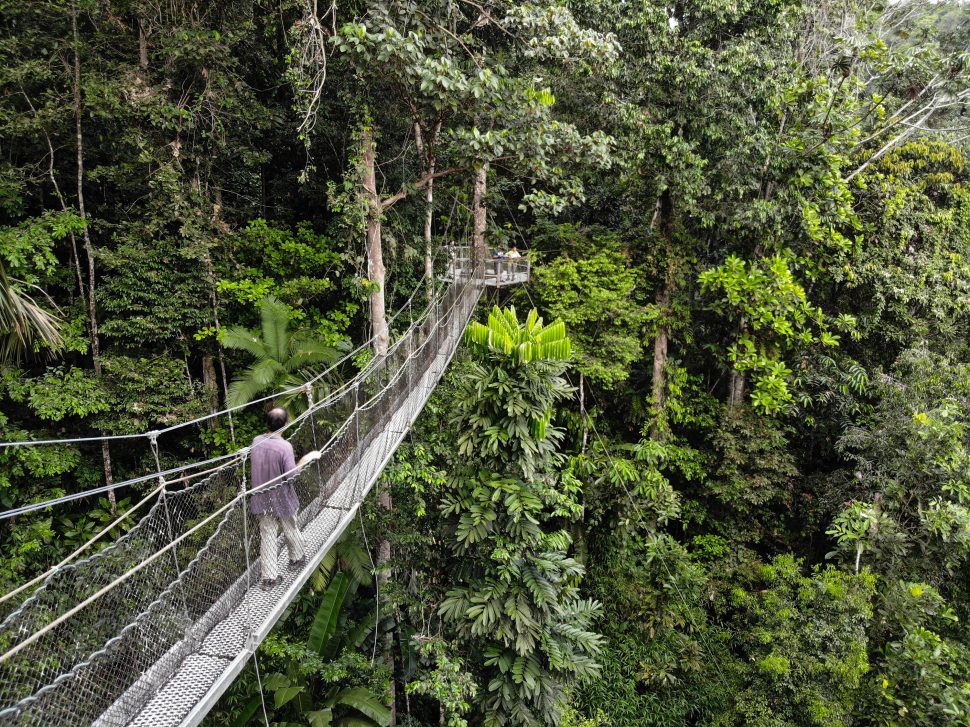Tourism is Guyana’s third largest export sector. Based on conservative estimates, it contributed $30.1 billion into our economy in 2018. Unlike gold or oil and gas, tourism is not an extractive industry. This means that tourism has the potential to outlive the extractive sectors, as it will continue to provide economic, social and conservation benefits over the long-term. The challenge is to ensure Guyana’s tourism sector realises these benefits. The Guyana Tourism Strategic Action Plan: 2019-2025 was developed to address this need.
Planning for Success
Guyana received a 15.9% increase in arrivals in 2018 of which there was a 21% increase in leisure travel (183,639 total) and a 15% increase in business travel (28,466). It is anticipated that if the current trends continue Guyana will attract more than 500,000 a year as early as 2025, which would reflect nearly doubling visitation over 10 years. This will become problematic without a stronger policy environment and investment in tourism development. The Guyana tourism sector is already experiencing unmet market demand. We need more product that meets international safety, quality and sustainability standards.
The Department of Tourism, Guyana Tourism Authority (GTA), Tourism & Hospitality Association of Guyana (THAG) and other sister governmental agencies and private sector partners are preparing for the imminent success. The overall approach is centered on implementing sustainable destination management and development best practice that is designed to meet growing market demand and maximise the economic, social, and conservation benefits through the long-term.

Taking a Global Leadership Role
Guyana recently gained worldwide recognition for being named the world’s #1 “Best in Ecotourism” destination and one of the Top 10 Sustainable Destinations by the Green Destination Foundation at ITB Berlin. Through this and other recent achievements, Guyana is fast becoming the next hot destination for travel. An increasing number of travellers want to visit, and their expectations are high. We have one opportunity to get tourism right, which is why the Department of Tourism and GTA are aligning tourism policy, strategy, planning, demand-driven product development, and capacity building with the Green State Development Strategy. But these agencies cannot do it alone. Fortunately, inter-ministerial, multi-stakeholder collaboration is becoming the new norm in Guyana. Through collaboration, key stakeholders are starting to create a positive policy environment, prioritise critical infrastructure and transportation improvements, and work toward reducing the cost associated with travelling within the hinterland. Everyone directly and indirectly involved in tourism has a role to play. This includes but is not limited to residents, visitors, local and international businesses, civil society, and government.
Volume with Value: A Strategic Decision
Traditionally, successful tourism development has been measured on a linear scale based almost exclusively on the year-on-year increase in visitors to a destination. While this metric is still important, equal emphasis should be placed on the value that each traveller represents. Guyana is an expensive destination to travel to and within. We are competing with every other destination in the world. This is why the GTA’s strategy is to promote what uniquely differentiates Guyana from competing destinations. This means targeting travellers interested in five brand pillars: (1) Nature/Wildlife, (2) Culture/ Heritage, (3) Active/ Exploration, (4) Birding, and (5) Scientific/Academic/ Educational travel and tourism. These pillars exemplify a product market match and apply to domestic, diaspora and international target markets. For example, nature-based travelers tend to stay longer and spend more during their vacations, travel with a lighter environmental footprint, put up with a greater degree of hardship to reach a destination and generally take on more risk when travelling to ‘less safe’ destinations.
Protecting Our Natural Heritage
Guyana’s National Protected Areas System (NPAS) is central to the development of a Green State. Governments worldwide, including the Government of Guyana, have agreed to protect 17% of land and 10% of the ocean by 2020. But today, we are falling short, with 15% of land protected and 7% of the ocean. The UN Convention on Biological Diversity requires that, by 2020, Guyana set aside 17% of its terrestrial area for conservation. Guyana is further committed under the Paris Agreement to set aside 2 million hectares of terrestrial protected areas to contribute to the global carbon sink.
These commitments can be addressed through working with indigenous communities, government and civil society to expand and strengthen the capacity of a NPAS and address the gaps in the coverage of the current
system. This will increase the number of protected areas such as the conservation of the North Rupununi Wetlands and create new community conservation following examples such as the Rewa River watershed and the Apoteri tribal waters from Yakatu lagoon to King George Falls. Protecting habitat at a landscape level will help to protect the bird, wildlife, and aquatic species that depend upon it.
In meeting these commitments, Guyana can and should become a leader in conservation tourism. Conservation tourism is defined as commercial tourism operations that make a net positive contribution to conservation of biological diversity and ecosystem services. The net result is that tourism can not only cover the majority of park management expenses, it can also provide economic benefits to indigenous communities within and adjacent to protected areas.
Empowering Demand-driven Community-led Tourism

Tourism development in Guyana has been ad hoc. Investments in tourism should be demand-driven. Sustainable tourism development is aligned with market demand, market access, visitor or market readiness or strategic visitor flows through tourism circuits. Collaboration between the Department of Tourism, GTA, Ministry of Indigenous Peoples’ Affairs (MoIPA), THAG and domestic and international travel trade partners on demand-based development is the means for scaling up the types of tourism that Guyana is uniquely positioned to offer. The GTA, for example, has developed a community-owned and led tourism framework and toolkit to establish a step-wise methodology to create new tourism products in prioritised indigenous communities in collaboration with the MoIPA. Leveraging combined budgetary resources is resulting in the development of community-led and owned tourism enterprises in four pilot communities. This leads to increased spending in these communities, increased pride in cultural heritage, and reduced outmigration. Based on the initial success, the GTA and MoIPA aim to involve an increasing number of communities in this body of work.
Community-led tourism is also being empowered through the Regional Democratic Councils and regional tourism committees. The aim is to foster regional cooperation, formalise tourism circuits that are linked to existing transportation services and existing strategic visitor flows. Three major projects are in the pipeline for regional development, including the placemaking of George-town, development of the Essequibo Circuit with expansion into Region One to connect Shell Beach and Warapoka to this circuit, and the further development of Region Eight given the current air linkages with regularly scheduled flights by Air Services Limited. Within the next five years, regional and community leaders will be playing increasingly important roles in managing and marketing tourism.
Improving Standards and Investing in Future Leaders
Most international tour operators require their domestic counterparts to be licensed and insured at a minimum. A majority of travellers’ travel choices are influenced by their peers and third-party ratings on TripAdvisor and Google. In order to meet international safety, quality and sustainability trade standards and travellers’ expectations, substantive investments need to be made in capacity building with an emphasis on entrepreneurship.
The GTA, Georgetown Chamber of Commerce & Industry, and THAG are securing development assistance to develop and implement standardised tourism curricula and promote tourism as a rewarding career track to foster entrepreneurship and employment. In addition, the GTA is working on establishing a Tour Guide Certification Programme. It is envisaged that this curriculum will be offered through the new Tourism Institute that is under development and through other partners like Bina Hill Institute and directly through the GTA.
Licensing of local tourism businesses and establishments needs to be the new norm with the majority of the sector working on improving their operational standards on an ongoing basis. Furthermore, with an estimated 90% of graduates of the University of Guyana leaving the country, the Government of Guyana must address out migration through progressive labour policy.
Raising Awareness and Driving Market Demand
The GTA is focussed on strengthening Guyana’s brand in the global marketplace. It will continue to maintain a Marketing & Communications Strategic Action Plan to efficiently and effectively reach the types of travellers that are attracted to Guyana’s product offering. Emphasis will remain placed on strategic print and digital marketing and market representation in the core markets of North America and the United Kingdom, and the investment markets of Germany, Austria, Switzerland, Nether-lands, Luxemburg and Belgium. As these markets become more mature, new investments markets in Asia and Latin America will be selected based on organic growth in visitation from these markets.
Guyana is in the unique point in its tourism development journey. While many destinations have chosen to offer a somewhat commoditised and homogenised tourism product suitable for mass tourism, Guyana’s strengths lie in the fact that it is authentic. By protecting its natural and cultural heritage and investing in its people and in enterprise development, the Guyana tourism sector is setting itself up for success through 2025 and beyond.
WWF-Pacific (December 2015), Nature-based Marine Tourism in the Coral Triangle Exploring the potential for low-impact, high-value Nature-based Marine and Coastal Tourism, WWF, Australian Aid, Coral Triangle Initiative, and 2iis Consulting
Calculation based on data sources from WTTC (March 2017) Travel & Tourism Global Economic Impact & Issues 2017, https://www.wttc.org/ research/economic-research/economic-impact-analysis/ (e.g., Travel & Tourism forecasts over the next ten years also look extremely favorable with predicted growth rates of 3.9% annually); World Travel & Tourism Council, Travel and Tourism Economic Impact Guyana 2017; and UNWTO
Mandala Research (2013), The Cultural and Heritage Traveler Report
World Economic Forum (22 Apr 2019), We need to protect 30% of the planet by 2030. This is how we can do it., Nicole Schwab & Kristin Rechberger









